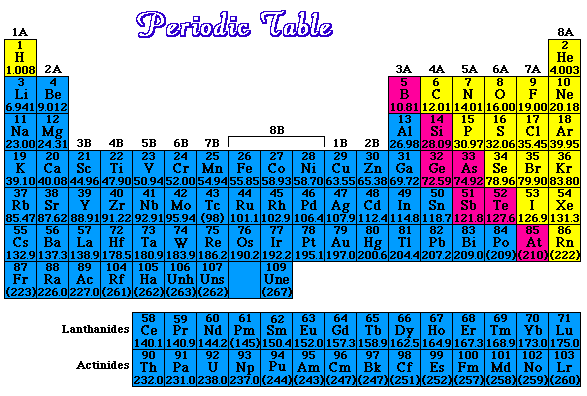
Some quick historical facts about the periodic table:
Dmitri Ivancritch Mendeléeff came up with the first version of the periodic table in 1864. Since then, there has been more than 700 versions other versions of the table proposed. The periodic table is organized by listing elements in order of increasing atomic mass. It is divided into vertical columns called groups or families and horizontal rows called periods. There are eighteen groups and seven periods.

- Metals are usually located from the left to the middle region of the periodic table groups and occupy most of the space between groups 1-16.
- Semimetals, also known as metalloids are found as a staircase the separates the metals and non-metals between groups 13-17.
- Non metals are foung between groups 14-18 and one named Hydrogen in group one.
No comments:
Post a Comment